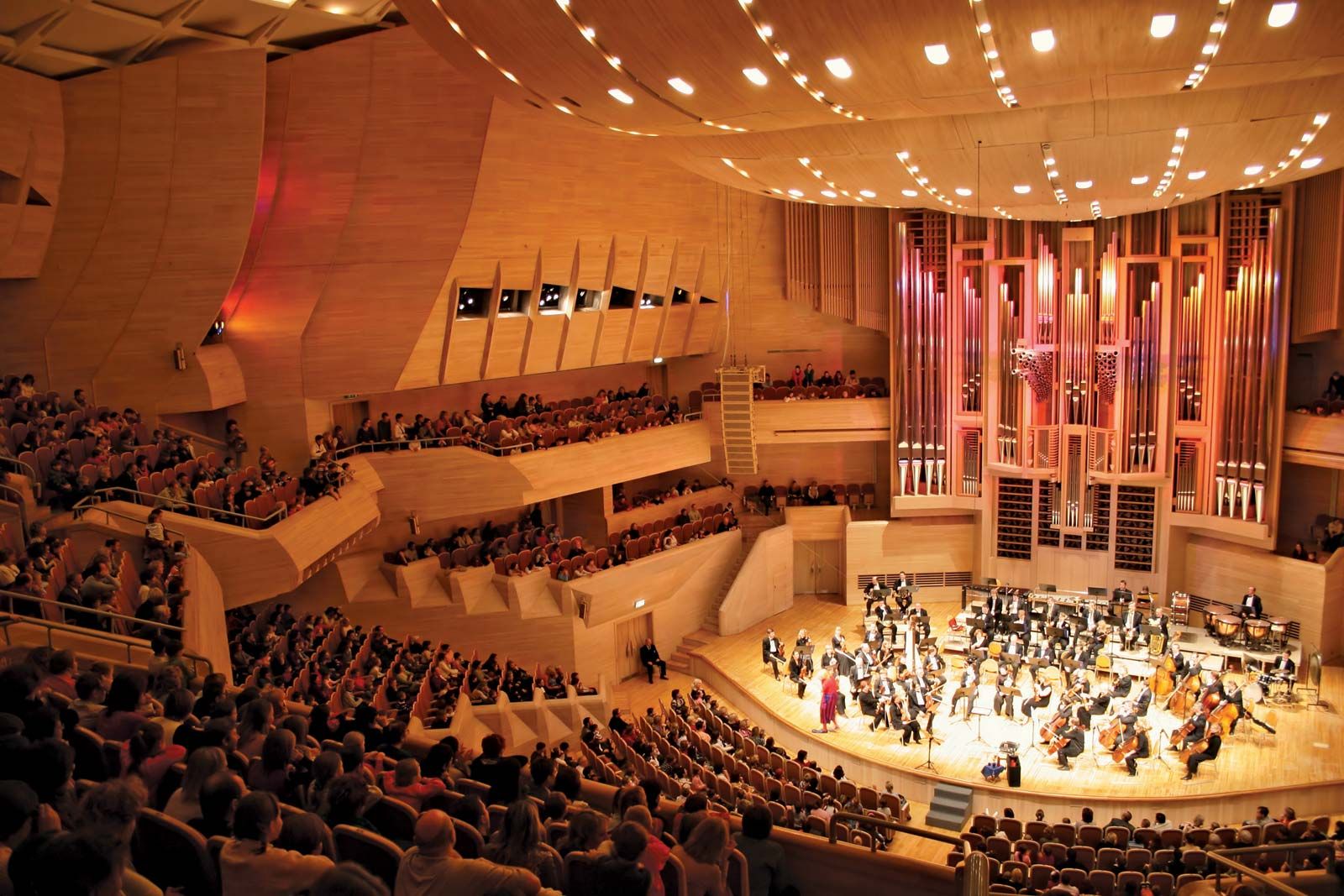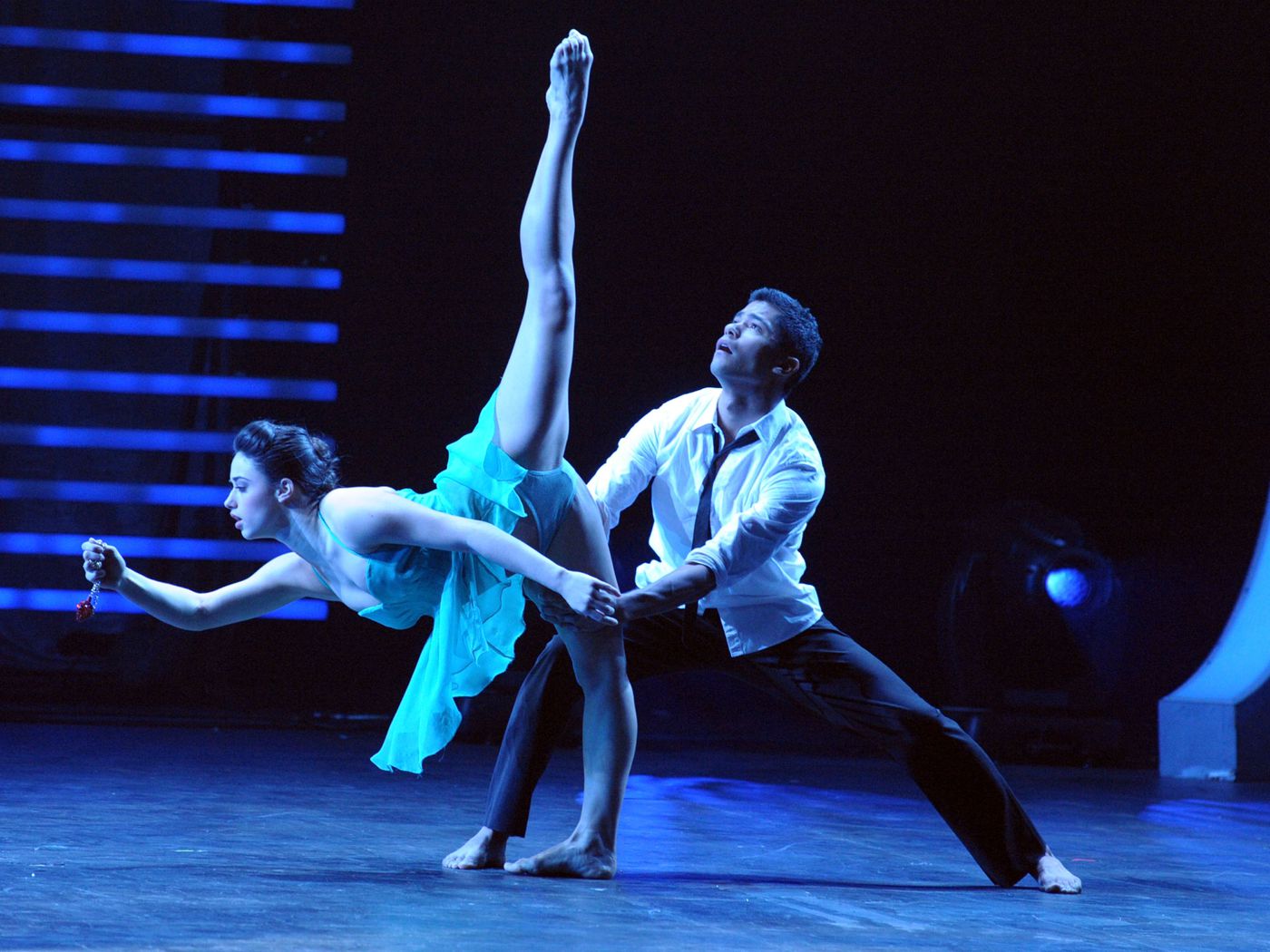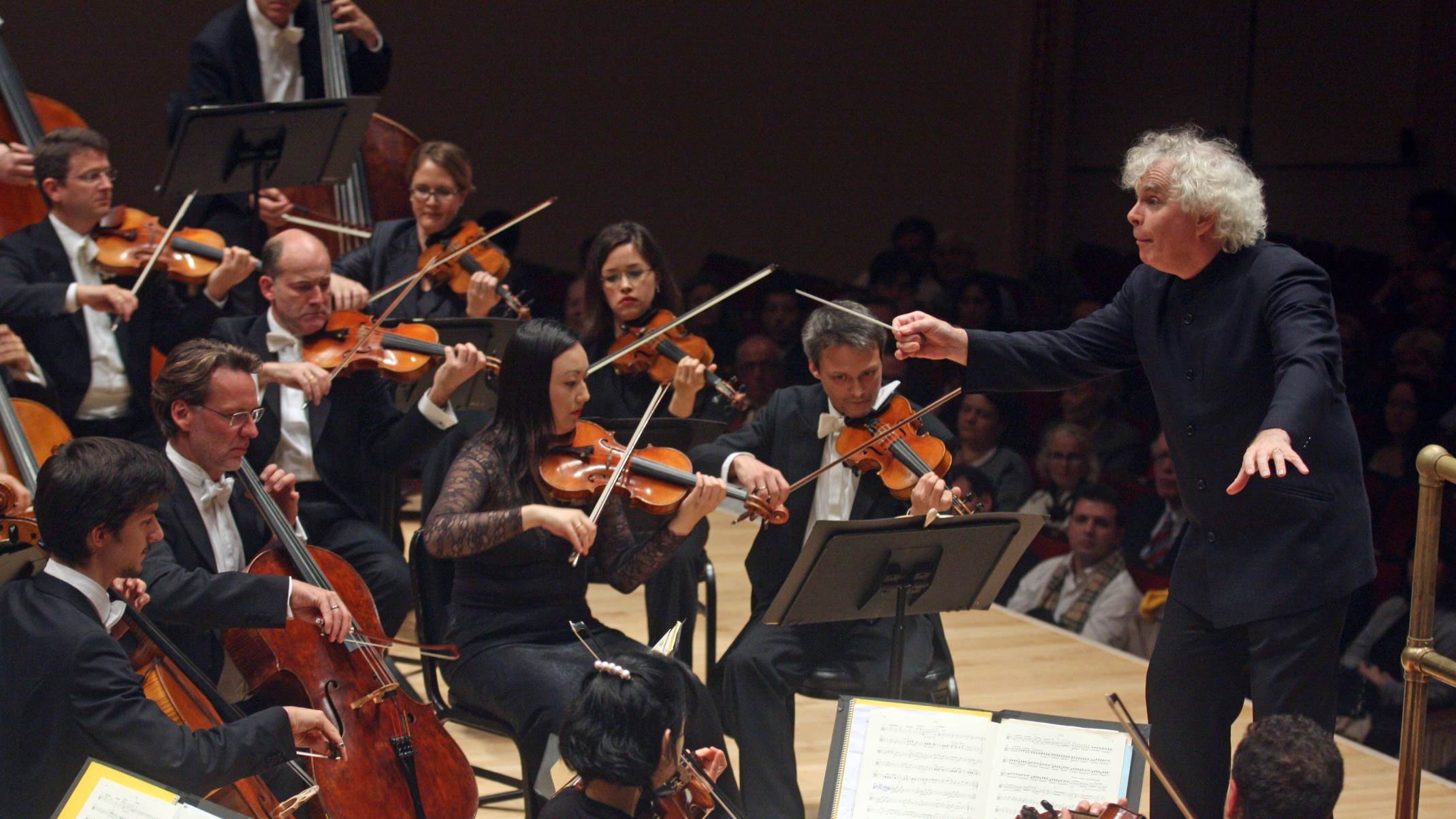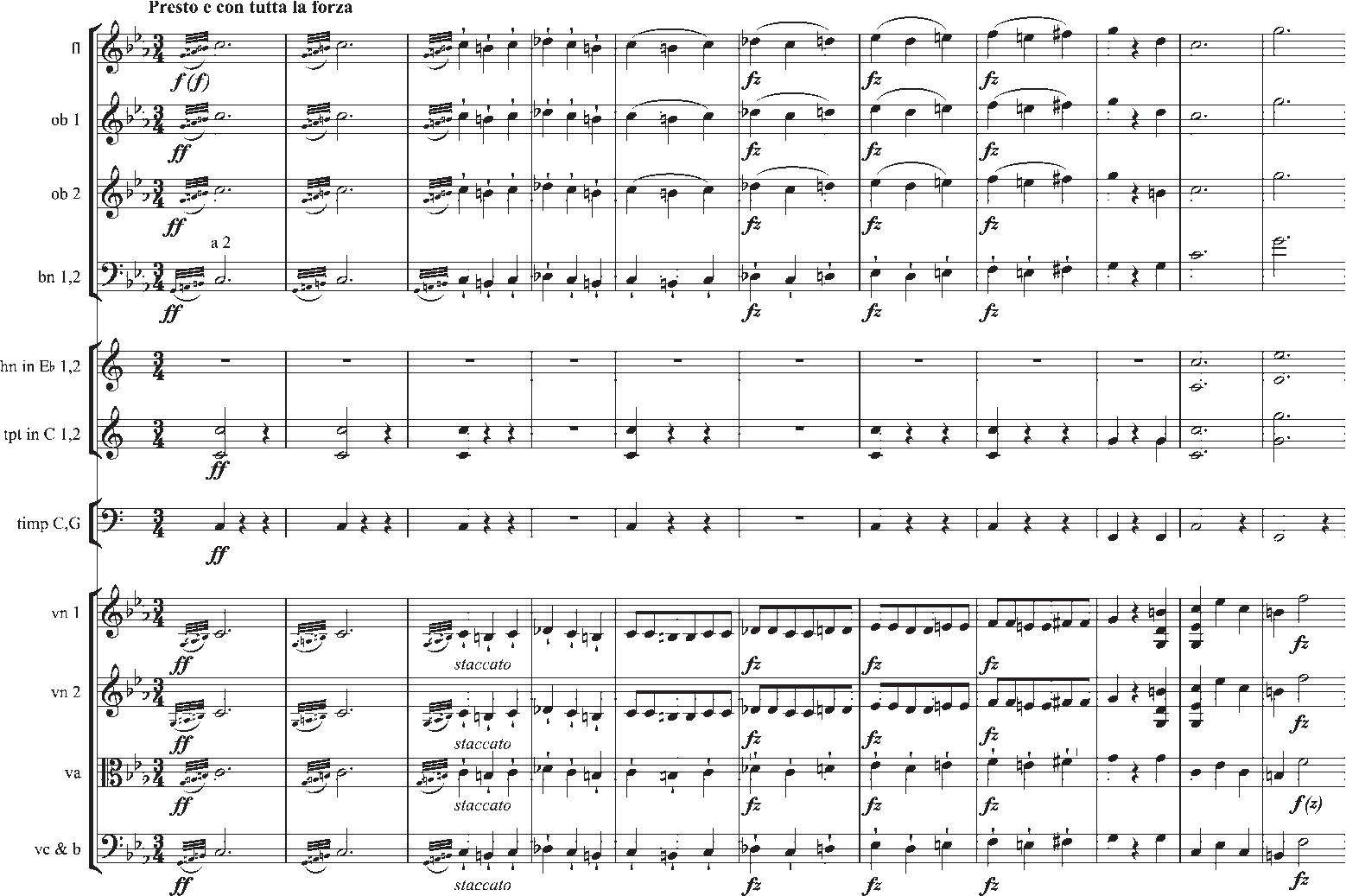Home>Genres>Classical>What Mood Best Describes A Typical Fourth Movement Of A Classical Symphony


Classical
What Mood Best Describes A Typical Fourth Movement Of A Classical Symphony
Modified: February 24, 2024
Discover the captivating world of classical music with our insight on the typical fourth movement of a classical symphony. Immerse yourself in the mood and emotion it evokes.
(Many of the links in this article redirect to a specific reviewed product. Your purchase of these products through affiliate links helps to generate commission for AudioLover.com, at no extra cost. Learn more)
Table of Contents
- Introduction
- Definition of a Fourth Movement in a Classical Symphony
- The Role of the Fourth Movement in a Classical Symphony
- Characteristics of a Typical Fourth Movement
- Mood Descriptions for a Typical Fourth Movement
- Interpretations of the Mood in Fourth Movements
- Examples of Fourth Movements in Classical Symphonies
- Conclusion
Introduction
Classical symphonies are a cornerstone of Western classical music. Composed in multiple movements, these symphonies showcase the brilliance and ingenuity of the composers of the past. Each movement serves a specific purpose and contributes to the overall structure and narrative of the symphony.
Within a classical symphony, the fourth movement holds great significance. It often serves as the culmination of the musical journey, delivering a powerful and emotional climax. Understanding the characteristics and mood of a typical fourth movement is key to appreciating and analyzing classical symphonies in a deeper and more meaningful way.
In this article, we will explore and describe the mood of a typical fourth movement in a classical symphony. We will delve into the definition, role, and characteristics of the fourth movement, as well as provide examples and interpretations to bring these concepts to life.
Whether you are a classical music enthusiast, a music student, or simply curious about the intricacies of classical symphonies, this article aims to shed light on the fascinating world of fourth movements and their emotional impact.
Definition of a Fourth Movement in a Classical Symphony
In order to understand the mood of a typical fourth movement, it is important to first grasp the concept of a fourth movement within a classical symphony. A classical symphony is typically composed of multiple movements, which are separate sections that make up the entire musical piece.
The fourth movement, also known as the finale, is the last movement in a classical symphony. It is often the longest and most grandiose section, serving as the culmination of the symphony’s musical ideas and emotional journey.
While the specific structure and content of the fourth movement can vary from symphony to symphony, it is generally characterized by its energetic and dynamic nature. Composers often utilize this final movement to showcase their technical prowess, creating a powerful and captivating musical experience.
The fourth movement typically follows the slower and more introspective third movement, which serves as a contrast and preparation for the grand finale. This contrast contributes to the dramatic impact and sense of resolution that the fourth movement brings to the symphony as a whole.
It is important to note that not all classical symphonies have a fourth movement. Some symphonies may have fewer movements, while others may have additional movements beyond the fourth. However, when a classical symphony does have a fourth movement, it is often a significant and climactic moment within the musical composition.
In summary, a fourth movement in a classical symphony is the final section of the symphony that serves as the culmination of the musical journey. It is characterized by its energetic nature and serves as a contrast to the preceding movements. Understanding the structural and contextual significance of the fourth movement is essential in grasping the mood and emotional impact it brings to a classical symphony.
The Role of the Fourth Movement in a Classical Symphony
The fourth movement in a classical symphony plays a crucial role in shaping the overall narrative and emotional impact of the composition. It serves as the grand finale, bringing together the themes, motifs, and emotions that have been developed throughout the earlier movements.
One of the primary roles of the fourth movement is to provide a sense of resolution and closure. After the musical journey taken by the listener through the preceding movements, the fourth movement offers a climactic moment where tension is released and a sense of fulfillment is achieved. This final movement ties up loose ends and leaves the audience with a profound musical experience.
The fourth movement often features a heightened level of energy and intensity compared to the preceding movements. Composers make use of dynamic contrasts, intricate harmonies, and powerful orchestrations to create a climactic effect. This dramatic and emotional impact serves to captivate the listener’s attention and elicit a strong emotional response.
In addition to its role in providing closure and intensity, the fourth movement also showcases the technical prowess of the composer and the performers. It often includes virtuosic passages for solo instruments or elaborate choral sections, demonstrating the skill and artistry of the musicians involved.
Furthermore, the fourth movement can also introduce new thematic material or variations of earlier themes, creating a sense of unity and cohesion within the symphony. By incorporating elements from previous movements, composers create a cyclical structure and a satisfying sense of musical development and continuity.
Overall, the fourth movement in a classical symphony is a pivotal component that brings together the various elements of the composition. It provides a sense of closure, intensity, and technical brilliance, leaving a lasting impression on the listeners and solidifying the overall impact of the symphony.
Characteristics of a Typical Fourth Movement
A typical fourth movement in a classical symphony possesses distinct characteristics that set it apart from the preceding movements. These characteristics contribute to the overall mood and impact of the final section, creating a unique and memorable musical experience.
1. Energetic and Fast-paced: The fourth movement is often marked by a rapid tempo and a lively rhythm. It is common to find a burst of energy and a sense of urgency in this section. The music may be filled with intricate and fast melodies, creating a sense of excitement and propulsion.
2. Dramatic Dynamics: Composers often employ dramatic dynamic contrasts, shifting between soft and gentle passages and loud and powerful sections. This contrast heightens the intensity and emotional impact of the music, creating a sense of tension and release.
3. Virtuosic Solos: In the fourth movement, composers often showcase the skills of individual musicians through virtuosic solos. These passages demonstrate the technical brilliance of the performers and add a thrilling element to the overall composition.
4. Orchestral Brilliance: The fourth movement often presents the orchestra in full force, with the entire ensemble playing in unison or in complex harmonies. This orchestral brilliance contributes to the grandeur and power of the music, elevating the emotional impact for the listener.
5. Chorus or Vocal Elements: In some classical symphonies, the fourth movement may feature the addition of a chorus or vocal soloists. These vocal elements add an extra layer of depth and emotion to the overall composition, enhancing the overall mood and impact of the finale.
6. Development of Themes: The fourth movement may also incorporate the development and variation of themes introduced in previous movements. Composers often revisit earlier musical ideas, transforming and expanding upon them to create a sense of unity and musical development.
These characteristics collectively contribute to the distinct mood and atmosphere of a typical fourth movement. Its energetic and fast-paced nature, coupled with virtuosic solos, orchestral brilliance, and dramatic dynamics, create a powerful and captivating musical experience that leaves a lasting impression on listeners.
Mood Descriptions for a Typical Fourth Movement
A typical fourth movement in a classical symphony evokes a range of emotions and moods that contribute to its overall impact. These moods can vary depending on the specific composition and the intentions of the composer, but there are some common descriptions that can generally be applied to the fourth movement’s mood:
- Dramatic: The fourth movement often carries a sense of heightened drama, with intense and powerful musical passages that grab the listener’s attention. The use of dynamic contrasts and virtuosic solos adds to the dramatic effect, creating a sense of anticipation and excitement.
- Euphoric: As the climax of the symphony, the fourth movement can evoke a feeling of euphoria and triumph. The energetic rhythm and grandiose orchestration create a sense of elation, leaving the listener exhilarated and uplifted.
- Tense: With the build-up of energy and dramatic dynamics, the fourth movement often carries an underlying tension. The contrasting soft and loud passages, as well as the rapid tempo, create a sense of anticipation and expectation, keeping the listener on the edge of their seat.
- Celebratory: In many symphonies, the fourth movement is a moment of celebration, marking the accomplishment of a musical journey. This celebratory mood can be conveyed through jubilant melodies, festive rhythms, and exuberant orchestrations, creating a joyous and uplifting atmosphere.
- Majestic: The grandeur and power of the fourth movement often elicit a sense of majesty. The full force of the orchestra, along with the use of choral elements (if present), adds a regal quality that invokes a feeling of awe and reverence.
These mood descriptions represent some of the common emotions evoked by a typical fourth movement in a classical symphony. However, it is important to keep in mind that the specific mood of a fourth movement can vary greatly depending on the composer, the context of the symphony, and the individual interpretation of the performers.
It is the amalgamation of these moods that makes the fourth movement such a captivating and memorable part of a classical symphony. Whether it is the dramatic tension, the euphoric triumph, or the celebratory joy, the fourth movement leaves a lasting emotional impact on the listener, making it a highlight of the symphonic experience.
Interpretations of the Mood in Fourth Movements
The mood in fourth movements of classical symphonies can be subject to various interpretations, as different listeners may perceive and interpret the music in unique ways. While there may be intended emotions and moods from the composer, individual experiences and cultural backgrounds also play a role in shaping these interpretations.
1. Emotional Intensity: The intense and often fast-paced nature of fourth movements can evoke a range of emotions. Some listeners may interpret the mood as one of exhilaration and excitement, while others may feel a sense of urgency or even restlessness. The emotional intensity of the music can vary depending on the composition, with some fourth movements leaning towards a more joyful tone, while others may convey a sense of turbulence or struggle.
2. Sense of Triumph: Many fourth movements in classical symphonies are characterized by a sense of triumph and victory. The powerful and grandiose nature of the music can evoke feelings of accomplishment and triumph over adversity. Listeners may interpret this mood as a representation of overcoming obstacles or achieving a significant goal.
3. Inner Reflection: Some fourth movements may veer towards a more introspective mood, providing a space for listeners to reflect inwardly. These movements can create a contemplative atmosphere, allowing listeners to delve into their own thoughts and emotions. The subtle nuances, delicate melodies, and softer dynamics may evoke a sense of serenity and introspection.
4. Heightened Spirituality: In certain classical symphonies, fourth movements may embody a spiritual mood. The inclusion of vocal elements, such as a choir or soloists, can elevate the music to a higher realm. Listeners may interpret the mood as one of transcendence and connection with something greater than themselves, evoking a sense of awe and reverence.
5. Interplay of Emotions: Fourth movements often display a complex interplay of contrasting emotions. The mood may shift unexpectedly between moments of joy and sadness, serenity and turbulence, or triumph and despair. This emotional journey can invite listeners to experience a range of feelings, with interpretations influenced by personal experiences and perspectives.
It is important to note that the interpretations of the mood in fourth movements are subjective and can vary from person to person. Context and cultural background can also shape these interpretations. Therefore, discussions and dialogues around these interpretations can enrich the understanding and appreciation of classical symphonies, allowing listeners to connect with the music on a deeper level.
Examples of Fourth Movements in Classical Symphonies
To gain a better understanding of the mood and impact of fourth movements in classical symphonies, let’s explore a few notable examples:
1. Ludwig van Beethoven – Symphony No. 9 in D minor, Op. 125:
Beethoven’s Ninth Symphony is renowned for its powerful fourth movement, known as the “Ode to Joy.” This movement features a full choir and vocal soloists, conveying a sense of triumph and joy. The music builds in intensity, culminating in a chorus singing Friedrich Schiller’s poem, expressing a celebration of unity and brotherhood.
2. Gustav Mahler – Symphony No. 5 in C-sharp minor:
Mahler’s fifth symphony features a dramatic fourth movement that is characterized by a funeral march-like theme. This movement evokes a solemn and introspective mood, reflecting on themes of mortality and loss. The melody is passed between different sections of the orchestra, creating a haunting and emotional atmosphere.
3. Antonín Dvorák – Symphony No. 9 in E minor, Op. 95, “From the New World”:
The fourth movement of Dvorák’s New World Symphony is a lively and exuberant dance-like movement. It incorporates elements of American folk music, showcasing Dvorák’s exploration of the musical traditions of his newly adopted country. The mood is joyful and celebratory, capturing the spirit of optimism and cultural diversity.
4. Pyotr Ilyich Tchaikovsky – Symphony No. 4 in F minor, Op. 36:
Tchaikovsky’s fourth symphony features a fourth movement that contrasts the somber and melancholic tone of the preceding movements. This movement is marked by its energetic and fast-paced nature, creating a sense of urgency and excitement. Tchaikovsky skillfully combines dramatic passages with triumphant themes, leaving listeners with a powerful and emotionally charged experience.
These examples highlight the diverse moods and emotional landscapes that can be found in fourth movements of classical symphonies. From joy and triumph to introspection and reflection, each composition offers a unique perspective and resonates with listeners in its own way.
These fourth movements serve as remarkable examples of how composers utilize musical elements to evoke specific emotions and convey their artistic intentions. By experiencing these compositions, one can gain a deeper appreciation for the power and impact of the fourth movement in classical symphonies.
Conclusion
The fourth movement in a classical symphony is a pivotal and impactful component that brings together the musical journey, emotional intensity, and technical brilliance of the entire composition. It serves as the grand finale, providing a sense of resolution, climax, and fulfillment.
Throughout this article, we have explored the definition, role, characteristics, mood descriptions, interpretations, and examples of fourth movements in classical symphonies. We have seen how these movements possess distinct features, evoke a range of emotions, and hold a significant place within the symphonic structure.
From the triumphant and celebratory moods in Beethoven’s Ninth Symphony to the introspective and contemplative tones in Mahler’s Fifth Symphony, each fourth movement is a unique expression of the composer’s creativity and artistic vision. The energetic rhythms, dramatic dynamics, virtuosic solos, and orchestral brilliance create a captivating experience for listeners, leaving a lasting emotional impact.
Interpreting the mood of a fourth movement can be subjective, influenced by personal experiences and cultural backgrounds. However, the common thread among these interpretations is the transformative power of music and its ability to convey a wide range of emotions, from euphoria and triumph to introspection and reflection.
By immersing ourselves in the world of fourth movements in classical symphonies, we gain a deeper appreciation for the intricacies and richness of this musical form. We engage with the composers’ storytelling, their mastery of composition, and their ability to evoke powerful emotions through sound.
In conclusion, the fourth movement of a classical symphony is a culmination of artistic expression, musical craftsmanship, and emotional depth. It represents the pinnacle of the symphony, leaving listeners with a profound musical experience and a sense of awe for the timeless beauty of classical music.











